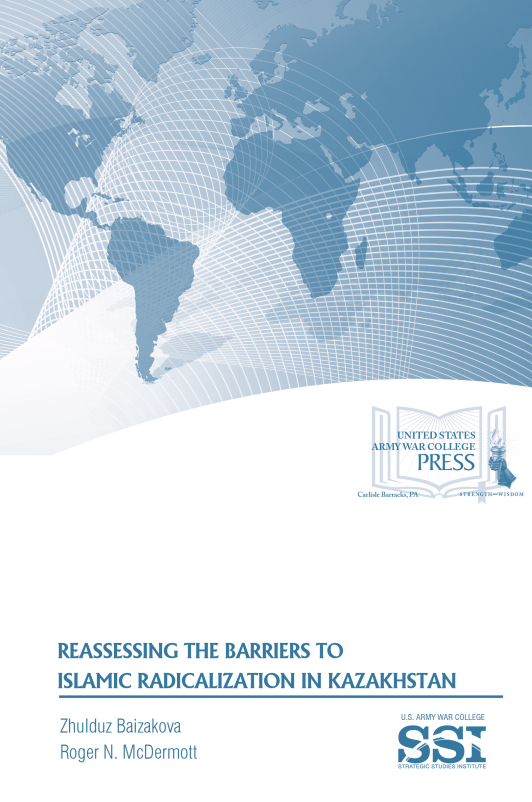 Authors: Ms Zhulduz Baizakova, Mr Roger N McDermott
Authors: Ms Zhulduz Baizakova, Mr Roger N McDermott
View the Executive Summary
Central Asia has been experiencing an increase or activation of radical Islamic movements over the last decade or so. These complex processes include increasing urbanization, institutional and individual corruption, the growing gap between rich and poor, the inability of the state to provide security, corruption in the law enforcement agencies, poor functioning of the state religious bodies, inefficient power structures, limited scope for citizens to influence decisionmaking, all which result in lower trust in the authorities as well as other factors. The authoritarian regimes of Central Asia gave rise to boiling anger and discontent among their populations. For people unable to defend their rights and interests, religion might be seen as a way out of this situation. Kazakhstan, the most stable and safe country in the region, witnessed a series of alleged extremist terrorist acts since 2011. Historic roots and the identity of “Kazakh Islam,” the nature of connection and influence reaching Kazakhstan from neighboring North Caucasus and Afghanistan and how it affects radicalization of the youth, and reasons for misleading assumptions are analyzed so as to identify how Kazakhstan is viewed from the outside world. State structures and the role of the state overseeing issues regarding Islam and its practices, with attention to banned extremist groups, their specifics, and the country’s experience of political violence in 2011-12, as well as the state’s response to the acts of violence, are discussed.